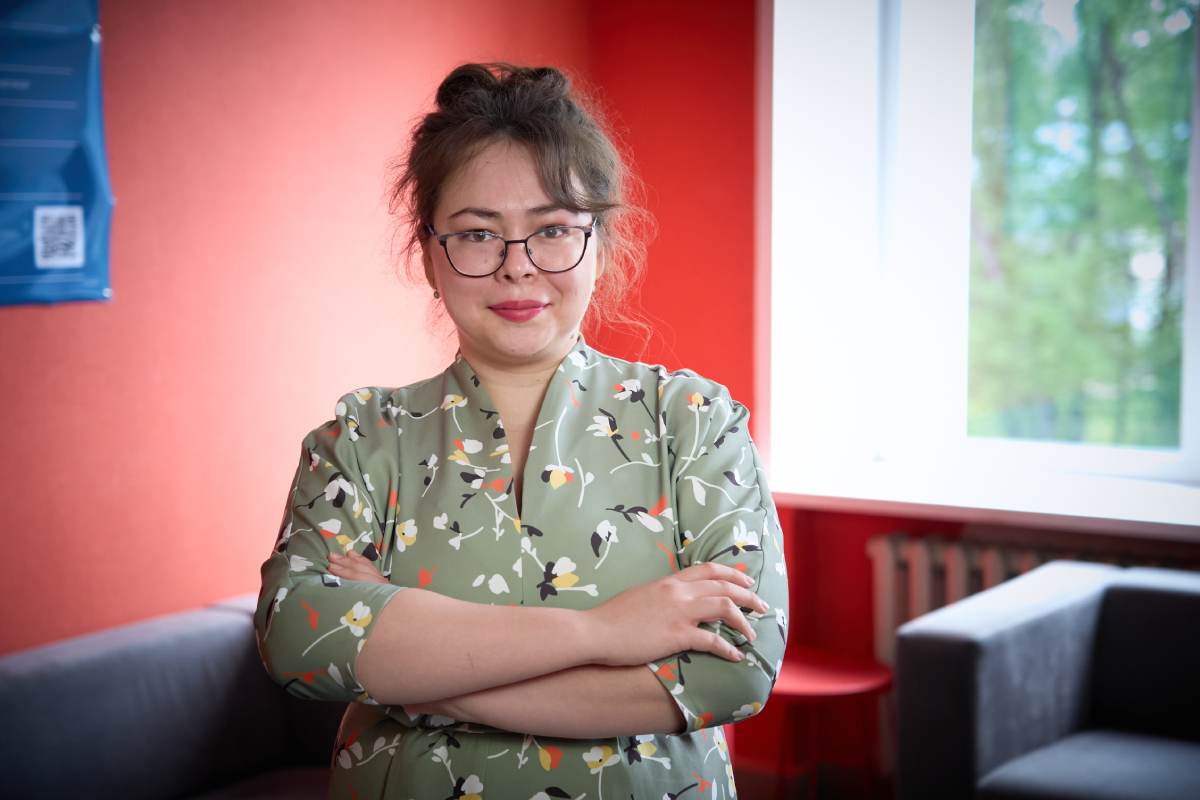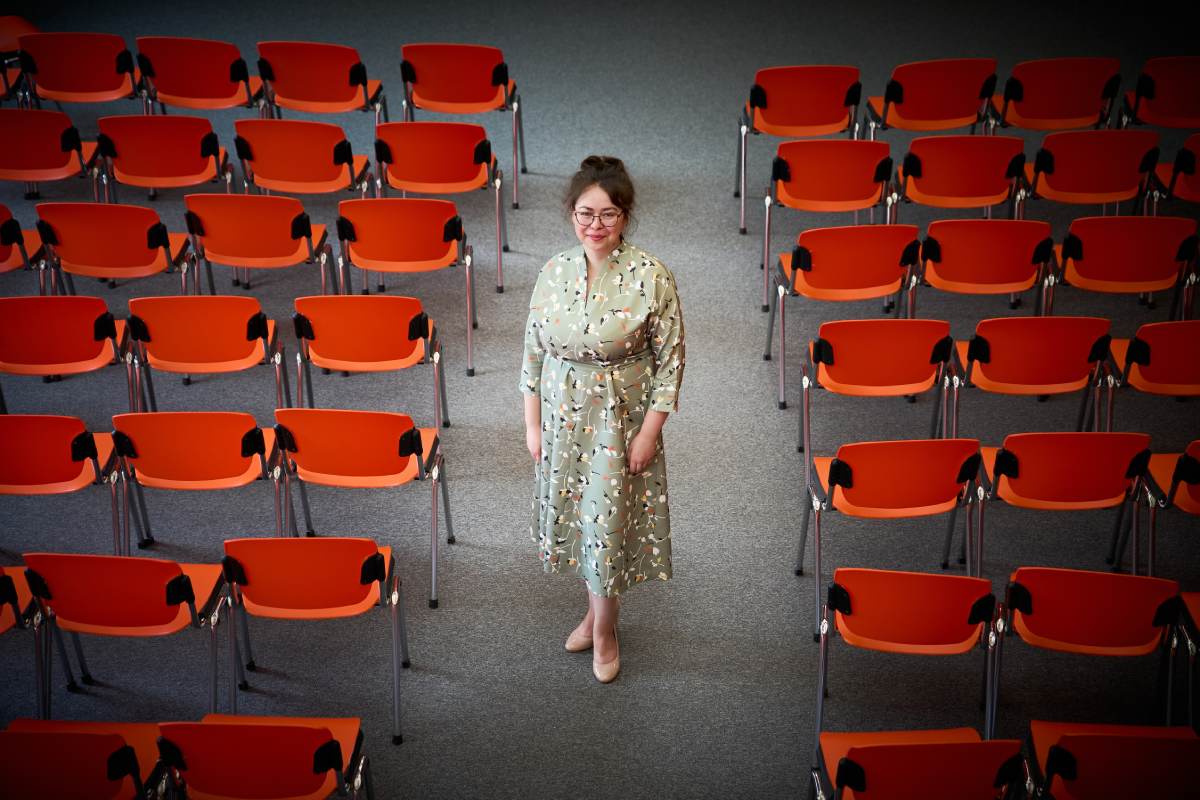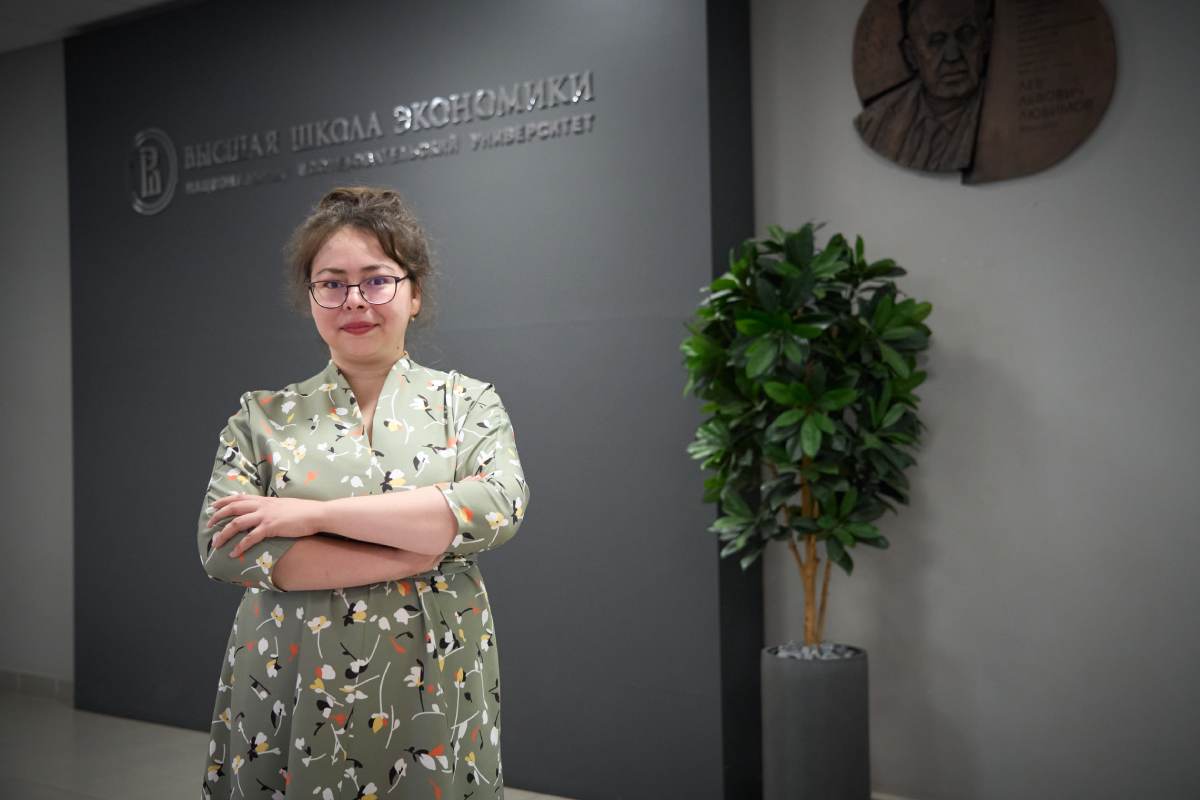‘I Dream of Developing an Information System Devoted to Zemstvo Schools’
Iliana Ismakaeva
Earned a bachelor’s degree in history and a master’s degree in cultural studies from Perm State National Research University (PSNRU). Academic director of the Digital Humanities master’s programme at the Perm campus of HSE University. Senior Lecturer at the Department of Humanities, Faculty of Socio-Economic and Computer Sciences, HSE University in Perm.
If Iliana Ismakaeva had not become a scientist, she would definitely have become a teacher like her parents. In this interview with the HSE Young Scientists project, she spoke about digital zemstvo studies, her walks along the Kama embankment, and virtual historical reconstructions.
How I got my start in science
I have taken part in the Academic Olympics in Historical Informational Science ever since my first year at PSNRU. It was conducted by the team of the Laboratory of Historical and Political Information Science, later the Centre for Digital Humanities. I was interested in the use of digital and information technologies in historical research. This is how I joined the laboratory team and met Sergei Kornienko, who later became my research advisor. People took notice of my work. I began to participate in scientific projects and laboratory events and go to conferences. This is how I first got into scientific circles. The people who supported and guided me and who continue to help me have played a decisive role in my development as a scientist.
My research focus
The HSE Perm campus department of humanities where I work has developed a major called ‘digital zemstvo studies.’ This is a fairly new area of research that joins digital technologies with the history of zemstvos, deepening our knowledge of zemstvo history. New technologies are used to study historical sources of zemstvos that we previously studied using traditional approaches.
This year we are planning several customised courses based on our projects. Undergraduates will have a research seminar on digital zemstvo studies, and master’s students will have elective courses on the use of digital technologies in the study of elected representative bodies in late imperial Russia. These will be available to students on all campuses.
In addition, we have a scientific and educational group on the issues of zemstvo self-government as a factor of sociocultural transformation. We are carrying out various projects in this area. For example, we are now working with teachers from our department, young researchers, and students to study zemstvo employees (‘the third element’) in the Perm province.

And personally, I am studying the role of the Perm zemstvo in the spread of literacy. I examine this area of activity of zemstvo institutions not only from the perspective of improving forms of education, but also in the context of the goals of this activity—the formation of basic literacy and an environment for maintaining those skills, as well as its social consequences.
What is a zemstvo?
Zemstvos were local government bodies in pre-revolutionary Russia. Zemstvos were introduced by the zemstvo reform—one of the great reforms of Alexander II in addition to the abolition of serfdom—and lasted until 1919. They emerged gradually in the provinces of the Russian Empire: in Moscow in 1865, immediately after the zemstvo reform, and in the Urals a little later. In Perm, the zemstvo was established in 1870.
Zemstvos were elected representative bodies; they had no political functions and dealt with local economic needs. It was during this period that zemstvo schools appeared. They were publicly accessible, free, and used teaching methods and techniques that were advanced for their time. The zemstvo school made education accessible to all segments of the population. Zemstvos were also involved in traditional medicine (thanks to them, even remote villages had doctors), road construction, postal services, statistics, study of the region, and fire safety. As part of the project to study this ‘third element,’ the students and I are exploring what workers of zemstvo museums, doctors, firefighters, veterinarians, and so on did.
We are also working with them to create collective portraits of zemstvo employees. The use of digital technologies to organise these sources, including the creation of prosopographical databases, will allow us to consider them both in aggregate and by individual categories (for example, zemstvo teachers or doctors).
A digital zemstvo case study
Zemstvo institutions left behind numerous documents. Each meeting of the provincial and district assemblies was documented and there are verbatim reports (journals) of zemstvo assemblies. Because the principle of openness was introduced in zemstvos, these materials were published.
For example, my colleagues and I did thematic mapping of journals of the provincial zemstvo assemblies of Perm, Moscow and St. Petersburg. Based on content analysis, we looked at which thematic areas were most represented in the journal over a certain period or in the speeches of a particular councilor. Suppose we can consider the relationship between the sociocultural characteristics of this councilor and his speeches. Let’s say there was a certain Ivan Molleson, the first public health officer in Russia. He participated in meetings of the Perm provincial zemstvo. Were his speeches only about medicine or did he express his opinions on other topics? This is also very interesting.
Student projects that I lead
I act as the leader of student projects related to virtual historical reconstructions, digitisation, 3D reconstruction of cultural historical monuments, and museum exhibits. My students and I work in different areas. This includes, for example, the digitisation of museum exhibits to ensure the accessibility of museum objects: you cannot touch a museum exhibit, but you can touch a 3D-printed model of it. This is especially important for inclusive programmes designed for visually impaired people. This also includes working with exhibits that are only in the collections and are not available for display. For example, last year, our undergraduates and I digitised the collection of Dymkovo toys, which is located in our local history museum.

Another focus is the reconstruction of completely or partially lost objects of historical and cultural heritage, from these same museum exhibits and archaeological finds to large architectural complexes. One of our projects is The History and Life of the Inhabitants of Yegoshikha, a joint project with archaeologists from PSNRU. Yegoshikha is a river in Perm, and it is from here that the history of the city began. This year, excavations took place in the river valley and its former settlements. And we worked with archaeological finds—containers in which food was stored, fragments of various vessels, buttons, buckles, and pipes. Many of these objects were not preserved in their entirety, and the participants worked with sources to reconstruct what they looked like.
Our other major project in this area is the virtual reconstruction of a tiled stove from the first half of the 18th century. Individual tiles are kept in the local history museum, and the entire oven was reconstructed based on sources.
My achievements
I have published on the topic of literacy, and I hope to be able to defend my PhD thesis on this topic in the near future.
I am also proud of the project to develop a course on virtual and augmented reality, which won the Potanin Foundation grant competition for master’s degree teachers. But most of all, I am proud of our students, their research results and victories. It’s nice to see that their research and projects receive additional support at competitions and that colleagues and professionals at large scientific conferences appreciate their work.
My dream
To develop an information system dedicated to zemstvo schools in the Perm province. This should be a site with information about zemstvo schools that existed in the province. Many of them became the basis for existing schools. At the same time, very little information has been preserved about the history of schools in the pre-revolutionary period. Schoolchildren and teachers will be able to use this system, study the history of their school, add information themselves, and conduct joint research on the topic of school education. Then this system can be extended to the whole of Russia.

I am currently developing a database of zemstvo schools in the Perm province on which this information system will be based. I started doing this as part of my master’s thesis. Very little information is available: in the pre-revolutionary period, only sporadic surveys of schools were carried out and much of the archival documents were lost. I collect information based on the reports of primary public school inspectors: when the school was opened, when it was transferred to the zemstvo, when it was closed, who worked there, what subjects were taught, how many villages the school was in, how many miles separated the villages, was there a library, and whether the school had accomodations so that children could stay overnight. This is the organisation of data for further research, but it is no less important than the research itself.
Science for me is, first of all, people and discoveries. It is teamwork, mentoring, helping each other, new results, new technologies. And this is what we strive to show our students. We actively involve them in teamwork, participation in conferences, and research.
I would like to meet Boris Veselovsky (Russian historian, economist, and professor who worked in the first half of the 20th century - Ed.). He was an eyewitness to events related to the activities of zemstvos and was one of the first to formulate the principles of the scientific study of zemstvo history. I would like to talk to him about zemstvos.
How I deal with burnout
In the morning I teach classes to bachelor’s students and in the evening, master’s students. In between classes, I have time to go to the archive and work on articles. I sometimes feel burned out after finishing a big project. In such cases, relaxing alone in nature can help. Walking along the Kama embankment, reflecting calmly. I also like to meet up with colleagues and friends: it gets my mind off things and helps me recharge my batteries. Crocheting in my free time also helps with burnout. Or making baskets to give to friends and colleagues. I go to symphony and chamber orchestra concerts, with a preferance for neoclassical music. I visit museums not only as part of my work, but also for new exhibitions or simply to refresh my memory of an exhibition.
Advice for beginning scientists
Today, science is open to everyone; anyone can try it themselves, including students. You need to overcome your fear, not throw up barriers, start participating in conferences and science schools, publish, and talk about your research. In addition, young scientists can receive grants to implement their projects, do internships, and participate in conferences, including those sponosred by HSE University.
What I’ve read and watched recently
In general, I like to read novels, but now I only have enough time to read scientific papers. I am re-reading the book by N.M. Pirumova about the zemstvo intelligentsia—the formation of professional communities in the Russian Empire. As for fiction, I recently re-read War and Peace. The Vakhtangov Theatre toured in Perm with a production based on this novel, and it delighted me so much that I decided to re-read the book and then watch the British TV series.